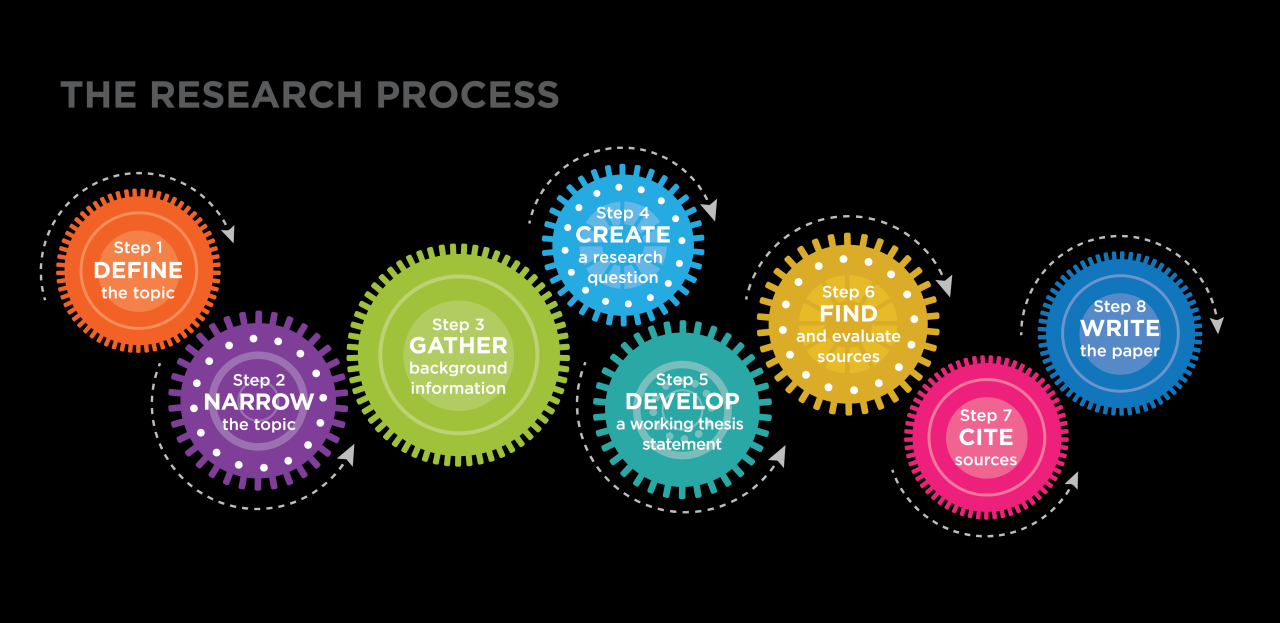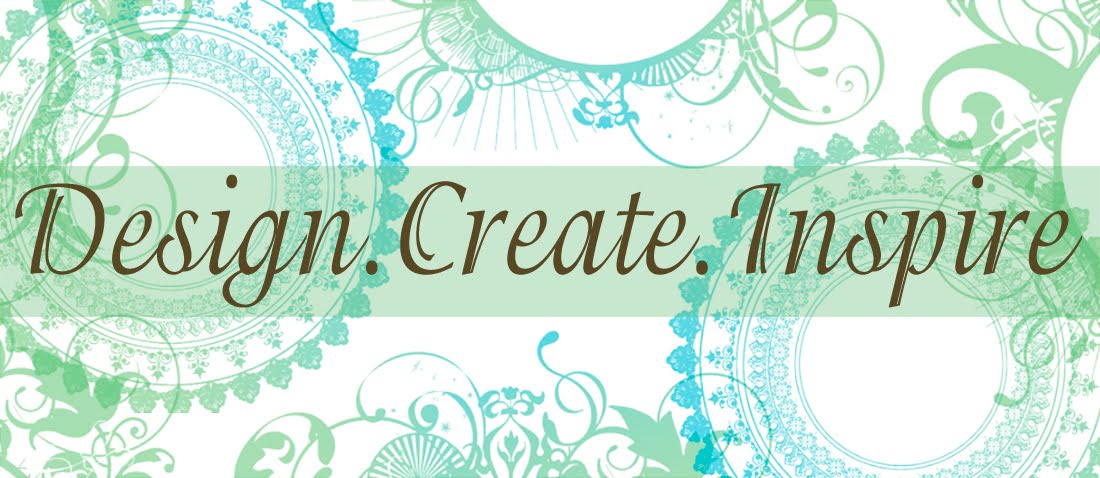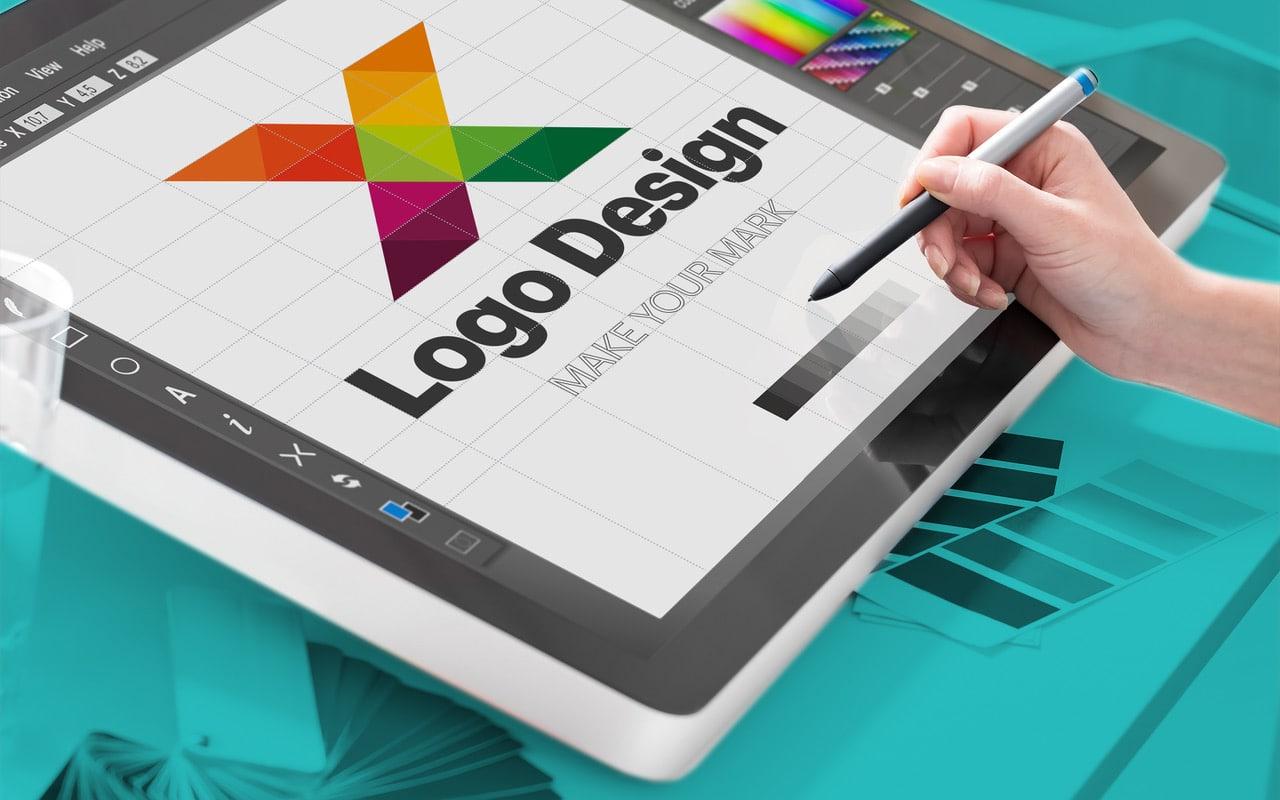Crafting a compelling opening is crucial for any piece of content, whether it’s a blog post, article, speech, or presentation. A captivating introduction immediately grabs the reader’s attention, sets the tone, and establishes the purpose of your work. This guide delves into the essential strategies for creating powerful openings that effectively engage your audience.
This comprehensive guide will walk you through various techniques for creating compelling introductions. From crafting captivating introductions and utilizing intriguing hooks to building anticipation, establishing credibility, setting the tone, and optimizing for different mediums, this guide equips you with the knowledge to create powerful openings for any content.
Crafting Captivating Introductions

A compelling introduction is the cornerstone of any successful piece of writing or presentation. It immediately captures the reader’s attention, establishes the topic, and sets the stage for the content that follows. Crafting an engaging introduction requires careful consideration of the target audience and the desired outcome. A strong opening can leave a lasting impression and significantly impact the reader’s engagement with the material.Effective introductions are not just about starting strong; they are about strategically guiding the reader or listener towards a deeper understanding of the subject.
This involves more than just stating the topic; it involves creating an initial connection with the audience, hinting at the value proposition, and providing a roadmap for the rest of the content. Understanding the nuances of different content types and employing appropriate rhetorical strategies are key to crafting introductions that truly resonate.
Compelling Opening Lines for Different Content Types
Effective opening lines immediately grab the reader’s attention and provide a clear indication of the content’s focus. The best opening lines are tailored to the specific content type and target audience.
- Blog Posts: Instead of generic statements, consider opening with a captivating anecdote, a surprising statistic, or a thought-provoking question. For example, “Ever feel like you’re spinning your wheels in your career? You’re not alone…”
- Articles: A concise summary of the article’s key points or a provocative statement can be effective. For example, “The increasing reliance on technology has led to unforeseen consequences in interpersonal relationships.”
- Speeches: A powerful anecdote, a relevant quotation, or a rhetorical question can grab the audience’s attention. For example, “The world is changing faster than ever before, and we need to adapt.”
Structuring a Captivating Introduction
A well-structured introduction not only grabs attention but also provides a clear path for the reader to follow. Consider these steps:
- Hook: Start with a compelling statement, anecdote, or question to pique interest. This initial hook should be relevant to the topic and intriguing enough to keep the reader engaged.
- Contextualization: Briefly introduce the topic and its significance. Clearly state the subject matter to be discussed.
- Roadmap: Briefly preview the key points or arguments that will be covered in the subsequent content. This gives the reader a sense of direction and anticipation.
Establishing Purpose and Target Audience
Clearly defining the purpose and target audience for the content is crucial in crafting an effective introduction. Understanding the reader’s background, knowledge level, and interests allows you to tailor the introduction to their specific needs and expectations.
- Purpose: Is the goal to inform, persuade, entertain, or inspire? Knowing the purpose will dictate the tone and style of the introduction.
- Target Audience: Who are you trying to reach? Understanding their demographics, interests, and concerns is critical to creating an introduction that resonates with them.
Using Rhetorical Questions
Rhetorical questions can effectively pique interest and engage the reader. They invite the reader to reflect on the topic and consider the implications of the content.
- Example: “Have you ever wondered how to effectively manage your time in today’s fast-paced world?”
Example of Opening Line Techniques
| Content Type | Opening Line Example | Explanation of the technique used |
|---|---|---|
| Blog Post | “Is your social media presence reflecting your true self?” | Provocative question to pique interest and encourage engagement. |
| Article | “The rise of remote work has presented both opportunities and challenges for companies and employees.” | Summarizes the topic’s key aspects, setting the stage for further discussion. |
| Speech | “In a world of constant change, what truly matters?” | Rhetorical question to engage the audience and stimulate reflection. |
Utilizing Intriguing Hooks

A compelling opening is crucial for capturing attention and maintaining reader engagement. A well-crafted hook immediately draws the reader in, setting the stage for a compelling narrative or persuasive argument. This section explores various techniques for creating effective hooks, highlighting their application in diverse contexts and emphasizing audience tailoring.Intriguing hooks serve as powerful attention-grabbing devices, instantly captivating the reader’s interest and setting the tone for the content that follows.
A well-designed hook can pique curiosity, provoke thought, and create an emotional connection, leading to greater reader engagement and retention.
Hook Techniques and Examples
Effective hooks utilize diverse approaches, each with its own strengths and weaknesses. Understanding these techniques allows for a tailored approach that resonates with the intended audience.
The following table illustrates various hook types, providing examples, target audiences, and explanations of their effectiveness:
| Hook Type | Example | Target Audience | Explanation |
|---|---|---|---|
| Surprising Statistic | “Did you know that 80% of successful entrepreneurs experienced failure before achieving their first major breakthrough?” | Entrepreneurs, aspiring business leaders, anyone interested in success stories | Statistics offer a powerful impact, immediately grabbing attention and showcasing the potential relevance to the reader’s goals. This example sparks interest by revealing a common truth about success. |
| Thought-Provoking Quote | “The only way to do great work is to love what you do.”
|
Anyone interested in motivation, creativity, and leadership | Quotes from renowned figures offer instant credibility and can inspire deeper reflection. The quote provides a concise and impactful opening that immediately sets a thoughtful tone. |
| Captivating Anecdote | “A young woman, facing a seemingly insurmountable challenge, found inspiration in a simple act of kindness from a stranger.” | Readers interested in personal growth, empathy, and inspirational stories | Anecdotes create an emotional connection by relating to the reader’s experiences. This example immediately generates interest in the story’s progression and likely the problem or solution that follows. |
| Intriguing Question | “What if the key to unlocking your full potential lies within a seemingly ordinary practice?” | Individuals seeking personal development, self-improvement, and empowerment | Questions pique curiosity and prompt readers to actively engage with the content. This example offers a tantalizing mystery, encouraging further exploration. |
Each hook technique offers a unique approach to capturing attention. Choosing the right hook depends on the specific content and the intended audience. Tailoring the hook to resonate with the reader’s values, interests, and experiences enhances its impact and creates a more meaningful connection.
Comparing and contrasting these hook strategies reveals that surprising statistics are effective in delivering a clear message immediately, while thought-provoking quotes are excellent for setting a tone and offering instant credibility. Anecdotes create an emotional connection, making the content relatable and engaging. Intriguing questions create a sense of anticipation and encourage active participation.
Building Intrigue and Anticipation

Creating a compelling introduction is not just about grabbing attention; it’s about cultivating intrigue and anticipation. A well-crafted opening leaves the reader wanting more, eager to discover what lies ahead. This is achieved through careful use of suspense, hints, narratives, and a sense of urgency. By strategically employing these techniques, you can establish a strong foundation for your content and ensure sustained reader engagement.A strong opening builds not only interest but also a desire to know more.
This anticipation is a powerful tool that drives readers deeper into your work, ensuring they remain invested throughout the piece. Effective use of these techniques keeps the reader hooked and eager to uncover the unfolding story or concept.
Techniques for Creating Suspense and Anticipation
Suspense and anticipation are essential elements in captivating introductions. They create a sense of mystery and curiosity, drawing the reader into the narrative. This involves subtly hinting at what is to come, without revealing too much too soon.
- Foreshadowing: Strategic use of hints or clues about events or ideas that will be explored later. This method can create a sense of mystery and intrigue, encouraging the reader to anticipate what will happen next. For example, in a story about a detective investigating a crime, the opening could describe a peculiar object found at the crime scene, hinting at a deeper connection or hidden motive.
This subtle foreshadowing primes the reader for further investigation and exploration.
- Compelling Narrative: Engaging the reader with a compelling narrative, even if it’s a short anecdote or a brief story, can draw them into the world you are creating. This is particularly effective in introductions that seek to set a scene or establish a character’s background. The narrative hook should be concise, intriguing, and relatable. For example, opening with a vivid description of a character’s unique encounter can quickly immerse the reader in the story.
- Creating Urgency: Introducing a sense of urgency or importance can immediately capture the reader’s attention. This can be achieved by posing a critical question, highlighting a significant problem, or introducing a surprising statistic. For example, an article on climate change could open with a striking statistic about rising sea levels to immediately underscore the gravity of the issue and its urgency.
Methods for Building Anticipation in Presentations
Building anticipation in presentations is crucial for maintaining audience engagement and ensuring that the message is effectively conveyed. It’s about creating a sense of excitement and curiosity that will carry the audience through the entire presentation.
- Start with a Question: Pose a thought-provoking question related to the topic to pique audience curiosity and encourage them to think critically about the subject matter. The question should be relevant, engaging, and easily understood by the audience.
- Use Intriguing Visuals: Employ compelling images, videos, or graphics to capture attention and create a sense of mystery. These visuals should be relevant to the presentation’s topic and should be displayed strategically.
- Introduce a Compelling Problem: Start by highlighting a significant problem or challenge related to the presentation’s topic. This technique can immediately establish the importance of the presentation and the need for the proposed solution or insights.
- Build Tension Through Storytelling: Use a captivating narrative or anecdote to illustrate the topic and create a sense of suspense, which will keep the audience engaged. This approach works well to illustrate a concept or a situation and can serve as a prelude to the main points.
- Employ Dramatic Pauses: Strategic pauses can create suspense and anticipation. These pauses can be used to emphasize key points or to allow the audience to absorb information before moving on to the next section.
Establishing Credibility and Trust

Establishing credibility and trust in the opening of your piece is paramount. A strong introduction not only captures attention but also positions you as an authority, fostering a connection with your audience that encourages engagement and retention. This foundation of trust allows your message to resonate more deeply and effectively.Building credibility is more than just stating your qualifications; it involves demonstrating your understanding of the audience’s needs and concerns.
This is achieved through evidence, research, and personal connections that showcase your expertise and relatability. By showing your audience that you understand and share their concerns, you increase their confidence in your perspective and ability to offer valuable insights.
Methods to Establish Authority
Establishing your authority and trustworthiness involves presenting yourself as an expert and reliable source of information. This is achieved through several strategies.
- Leveraging Evidence and Research: Using credible sources like studies, statistics, and expert opinions lends weight to your claims and demonstrates your thoroughness. For example, if discussing the effectiveness of a new marketing strategy, citing relevant research from reputable marketing journals enhances your credibility and strengthens your argument. Quantifiable data, such as “a 20% increase in conversion rates,” adds significant impact.
- Utilizing Testimonials and Endorsements: Incorporating endorsements from respected figures or satisfied clients further builds your credibility. If you’re presenting a new product, including testimonials from satisfied users highlighting its benefits establishes confidence in its value. Testimonials should be authentic and representative of your target audience’s experiences.
- Demonstrating Personal Experience: Relating your personal experiences and insights to the topic at hand helps connect with the audience on a human level. Sharing a personal anecdote about overcoming a challenge related to the topic, or a relevant struggle, creates a stronger connection and allows the audience to see you as someone who truly understands their challenges.
Connecting with the Audience
A personal touch is essential in establishing a strong connection with your audience. This allows you to establish a more intimate rapport with them.
- Relatable Anecdotes: Using a personal anecdote or relatable experience to illustrate a point is a powerful tool. For example, if you’re discussing the importance of perseverance in the face of adversity, sharing a personal story about overcoming a significant obstacle adds emotional weight and demonstrates your understanding of the audience’s struggles.
- Empathetic Tone: Demonstrating empathy for the audience’s concerns and experiences can significantly improve rapport. If discussing a complex issue, acknowledging the potential anxieties or reservations of the audience fosters a sense of trust and understanding.
Table of Credibility-Building Methods
| Method | Description | Example |
|---|---|---|
| Evidence & Research | Citing studies, statistics, and expert opinions. | “A recent study by Harvard Business Review found…” |
| Testimonials | Using endorsements from satisfied clients or experts. | “As a long-time customer, I can attest to the product’s effectiveness.” |
| Personal Experience | Sharing a relatable anecdote or experience. | “When I faced a similar challenge, I discovered…” |
Setting the Tone and Style

Establishing a clear tone and style from the very beginning is crucial for a compelling introduction. This sets the reader’s expectations and guides their engagement with the content. A well-chosen tone and style can enhance the overall impact and memorability of your introduction. Understanding how to effectively convey your intended message through appropriate tone and style is vital.The chosen tone and style should resonate with the content’s subject matter and purpose.
A lighthearted introduction might be suitable for a casual blog post, while a formal, serious tone is more appropriate for a technical report. Aligning the tone with the overall message ensures a cohesive and impactful reading experience.
Different Tones and Styles
Different tones and styles can be employed to create distinct atmospheres in introductions. These range from humorous and witty to serious and formal, and even inquisitive. The choice of tone should carefully consider the target audience and the content’s subject matter.
- Humor and Wit: Employing humor or wit can make the introduction engaging and memorable. This approach is particularly effective in introductions for articles, blog posts, or presentations aimed at a broad audience. For instance, a humorous anecdote or a witty observation can capture the reader’s attention and establish a friendly, approachable tone. An example could be starting with a relatable joke or a surprising fact related to the topic.
- Serious and Formal: A serious and formal tone is often used in introductions for academic papers, technical documents, or professional reports. This approach conveys respect for the subject matter and emphasizes the importance of the information being presented. Starting with a concise statement of the problem or a clear definition of the topic is suitable.
- Inquisitive and Engaging: An inquisitive tone can pique the reader’s interest and encourage them to delve deeper into the topic. Posing thought-provoking questions or introducing a compelling mystery can be effective in creating anticipation. This approach is particularly suitable for introductory sections of novels or articles where suspense is desired.
Aligning Tone and Style with Content
The tone and style should seamlessly integrate with the content’s overall message and purpose. Maintaining consistency in tone and style throughout the entire piece is essential for creating a cohesive and impactful reading experience. A sudden shift in tone can disorient the reader and diminish the impact of the introduction.
Maintaining Consistency
Maintaining a consistent tone and style throughout the entire piece is critical. This consistency reinforces the message and creates a strong, unified impression. A shift in tone can disrupt the reader’s experience and weaken the overall impact.
Establishing Tone in a Technical Document
A technical document, such as a user manual or a research paper, requires a clear and concise tone. The introduction should immediately establish the purpose and scope of the document. A formal, informative tone, avoiding ambiguity, is crucial. A good approach is to begin by clearly defining the subject and its relevance, followed by a concise Artikel of the document’s structure and the expected outcomes.
| Element | Description | Example |
|---|---|---|
| Subject Definition | Clearly define the subject matter and its importance. | “This document details the troubleshooting procedures for the Model X300 printer.” |
| Purpose Statement | Clearly state the purpose of the document. | “The primary purpose of this manual is to guide users through the setup and operation of the Model X300 printer.” |
| Structure Artikel | Briefly Artikel the document’s structure. | “This manual is divided into four sections: setup, operation, troubleshooting, and appendix.” |
Visual Appeal and Engagement
Visual elements play a crucial role in capturing attention and enhancing comprehension in introductions. Integrating compelling visuals can significantly boost reader engagement and leave a lasting impression, setting the stage for a more effective and memorable presentation. This section explores how to strategically incorporate various visual elements, ensuring they complement and reinforce the textual message.Visuals are more than just decorations; they actively participate in the communication process.
By thoughtfully selecting and presenting visual aids, you can improve clarity, spark interest, and make the introduction more memorable for your audience.
Incorporating Images, Videos, and Graphics
Visual aids, including images, videos, and graphics, can effectively convey complex ideas concisely and make the introduction more dynamic. Images, for example, can evoke emotions, create a mood, and help illustrate abstract concepts. Choosing high-quality images that are relevant to the topic and visually appealing is key. Videos can provide dynamic explanations, showcase processes, or introduce the topic through storytelling.
Graphics, such as charts, diagrams, or infographics, can simplify data and complex information. For example, a captivating image of a bustling marketplace could effectively introduce a presentation on global trade, while a short video demonstrating a product’s unique feature could be an effective introduction for a product launch.
Ensuring Visual Alignment
Visual elements should always align with the text and overall message of the introduction. The visual should not contradict the message but rather complement and reinforce it. For instance, if the introduction is about sustainability, images of nature or eco-friendly products would be appropriate. Ensure the visual style, colors, and overall aesthetic are consistent with the tone and style of the presentation.
This consistency creates a cohesive and professional impression. Using an image of a cluttered workspace in an introduction about productivity, for example, would be counterproductive and distracting.
Interactive Elements
Interactive elements can enhance reader participation and engagement. These elements can include interactive quizzes, polls, or clickable elements within an infographic. For example, a quiz at the start of a presentation about history could gauge the audience’s prior knowledge, leading into the presentation. Clickable elements within an infographic about data analysis could allow the audience to explore different aspects of the data, increasing engagement.
Interactive elements create a dynamic learning experience, allowing the audience to actively participate in the introduction.
Best Practices for Visually Engaging Introductions
- Select high-quality visuals that are relevant to the topic and visually appealing. Visuals should enhance, not detract, from the message.
- Maintain visual consistency with the overall tone and style of the introduction. A consistent aesthetic reinforces professionalism and cohesiveness.
- Ensure that visuals are clear, easy to understand, and load quickly. Poor-quality or slow-loading visuals can disrupt the flow of the introduction and negatively impact the audience’s experience.
- Use visuals to complement, not replace, the textual content. Visuals should support the information presented, not overwhelm it.
- Limit the number of visuals used. Too many visuals can be overwhelming and distracting. Focus on a few key images or videos that effectively communicate the message.
Adapting to Different Mediums
Crafting compelling openings requires a nuanced understanding of the platform and its audience. A captivating introduction in a written article may not resonate in the same way in a video or social media post. Successfully adapting opening strategies to various mediums is crucial for maximizing impact and engagement. This section explores the key considerations for tailoring openings across different communication channels.
Effective Opening Strategies for Different Mediums
Different mediums demand distinct opening approaches. The opening should seamlessly integrate with the platform’s characteristics and target audience. For instance, a concise, attention-grabbing hook works well in social media posts, while a more detailed and engaging introduction is suitable for longer-form written content. Understanding these nuances is essential for creating effective and impactful openings.
Blog Post Openings
Blog post openings often benefit from a conversational tone, establishing a connection with the reader. A thought-provoking question, a surprising statistic, or a relatable anecdote can quickly draw the reader in. These initial lines should preview the main points and encourage continued reading. A strong introduction sets the stage for the rest of the article, making it more engaging and relevant to the audience.
For example, an introduction that immediately addresses a common reader concern can increase reader engagement.
YouTube Video Openings
Video openings require a visual element to accompany the spoken word. A visually appealing intro, with an engaging hook, is essential. Using dynamic visuals, a concise and attention-grabbing introduction is necessary to keep viewers engaged. For example, a brief, compelling narrative or a surprising statistic displayed visually can immediately capture the viewer’s attention. Transitioning seamlessly from the intro to the main content is crucial for maintaining engagement.
Presentation Openings
Presentation openings should immediately establish the topic’s relevance and importance to the audience. A powerful opening statement, a captivating question, or a compelling anecdote can quickly engage the audience and create a desire to learn more. This approach establishes the presentation’s value proposition. The opening should be memorable and visually appealing. Visual aids are a crucial part of presentation openings.
A well-crafted visual aid can convey the presentation’s core message, grabbing the audience’s attention and setting the stage for the rest of the presentation.
Social Media Post Openings
Social media openings need to be brief, concise, and attention-grabbing. They must immediately convey the core message or call to action. A compelling image or video, paired with a concise, punchy headline, is crucial. The opening should entice the reader to engage with the post and the platform. Short, engaging questions or statements are effective in capturing the attention of social media users.
Comparing Blog Post and YouTube Video Openings
| Feature | Blog Post | YouTube Video |
|---|---|---|
| Primary Focus | Written content; building intrigue and engagement through words. | Visual storytelling; combining visuals and audio to capture attention. |
| Length | Can be longer; allow for more detail and background information. | Concise; needs to be quick to capture attention. |
| Tone | Conversational, engaging; establishing a connection with the reader. | Engaging, dynamic; creating an immediate impact. |
| Visuals | Limited visuals; primarily text-based. | Visuals are integral; using images, graphics, or video. |
| Call to Action | Encourage reading the entire article. | Encourage watching the entire video. |
Ending Remarks
In conclusion, crafting a strong opening is a multifaceted process requiring careful consideration of your target audience, the specific content type, and the overall message. By implementing the strategies Artikeld in this guide, you can significantly enhance the impact of your introductions and improve audience engagement. Remember to tailor your approach to the specific medium and audience for optimal results.